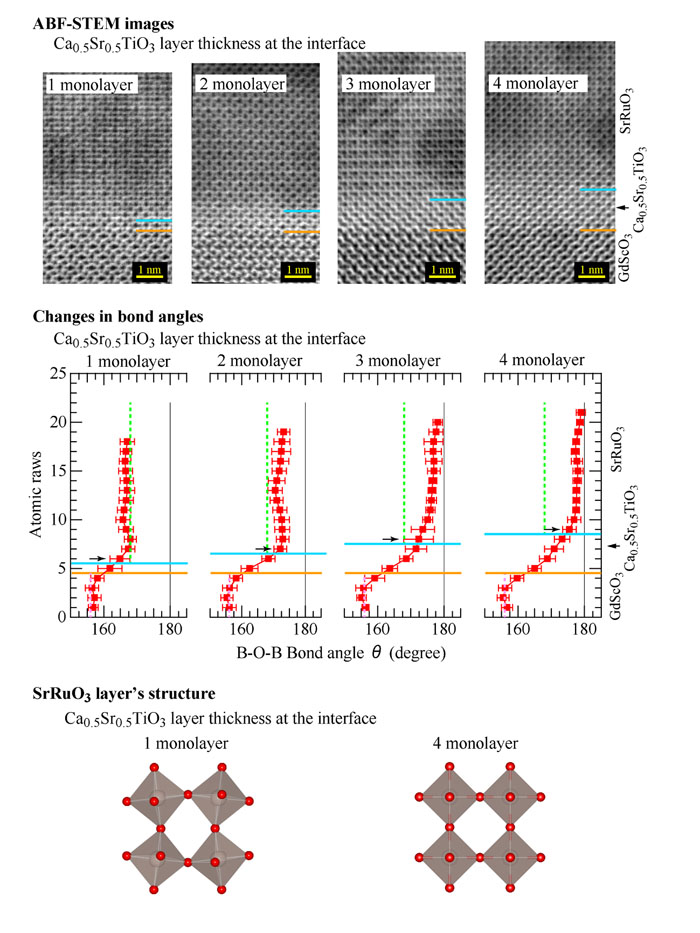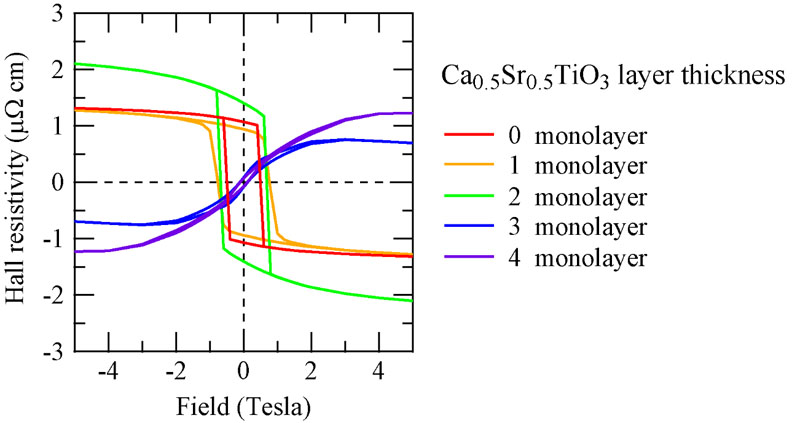Tuning Magnetic Anisotropy by Interfacially Engineering the Oxygen Coordination Environment in a Transition-metal Oxide
|
Published in “”Nature Materials” (Online Publication, March 8, 2016). |
Assoc Prof. Kan, D. Prof. Shimakawa, Y.(From Left)
Dr. Aso, R. Assit Prof. Haruta, M. Prof. Kurata, H.(From Left) |
|
|
|
||
|
Assoc Prof. Kan, D.; Ms. Sato, R.; Prof. Shimakawa, Y.
Dr. Aso, R.; Assist Prof. Haruta, M.; Prof. Kurata, H. |
||
|
Controlling structural distortions that are closely related to functional properties in transition-metal oxides is a key not only to exploring novel phenomena but also to developing novel oxide-based electronic devices. Recent advances in atomic-level synthesis techniques have made it possible to fabricate artificial heterostructures with chemically abrupt interfaces consisting of dissimilar oxides. These heterostructures have provided a good platform for engineering novel bonding geometries that could lead to emergent phenomena not seen in bulk oxides. In this study, we show that the oxygen coordination environment of a perovskite, SrRuO3, can be controlled by heterostructuring SrRuO3 with a thin (0–4 monolayers thick) Ca0.5Sr0.5TiO3 layer grown on a GdScO3 substrate. A Ru-O-Ti bond angle characterizing the SrRuO3/Ca0.5Sr0.5TiO3 interface structure was found to be engineered by layer-by-layer control of the Ca0.5Sr0.5TiO3 layer thickness, and that the engineered Ru-O-Ti bond angle not only stabilizes a Ru-O-Ru bond angle never seen in bulk SrRuO3 but also tunes the magnetic anisotropy in the entire SrRuO3 layer. The results highlight the importance of the oxygen coordination environments as a key factor determining the structural and physical properties of the oxide heterostructures and show that the interface engineering of the oxygen atomic position is useful in controlling the oxygen environment. |
||
|
Figure 1. (top) ABF-STEM images for the heterostructures with 1 – 4 monolayer thick Ca0.5Sr0.5TiO3 layer at the interface. The SRO/CSTO and CSTO/GSO interfaces are denoted by the blue and orange lines, respectively. (middle) M-O-M bond angle (M = Sc, Ti and Ru) as a function of the atomic position in the heterostructure. (bottom) Structure of the SrRuO3 layer in the heterostructure with the one- and four-monolayer-thick Ca0.5Sr0.5TiO3 layers. |
||
|
|
||
|
Figure 2. Magnetic field dependence of the transverse Hall resistivity of the heterostructures with 0 – 4 monolayer thick Ca0.5Sr0.5TiO3 layer at the interface.
|
||
|
This work was partially supported by the Core Research for Evolutional Science and Technology (CREST) program of the Japan Science and Technology Agency. The work was also supported by a grant for the Joint Project of Chemical Synthesis Core Research Institutions from the Ministry of Education, Culture, Sports, Science and Technology of Japan. |
||
 Institute for Chemical Research, Kyoto University
Institute for Chemical Research, Kyoto University International Joint Usage Research Center
International Joint Usage Research Center





